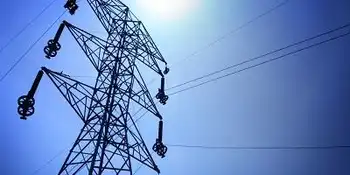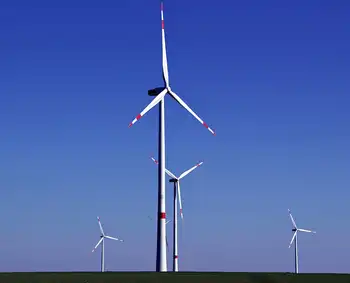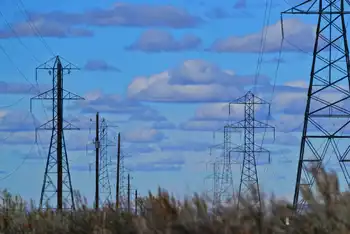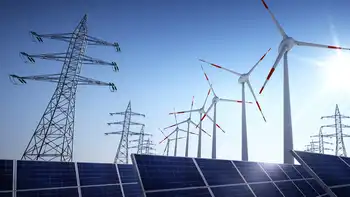American Transmission Co. proposes $2.8 billion power line plan
Milwaukee, WI - September 10 -- Seeking to shore up the state's vulnerable power grid, American Transmission Co. on Tuesday proposed a $2.8 billion, 10-year plan to add high-voltage lines to Wisconsin's existing electricity transmission system.
The plan could mean higher bills for consumers, who will ultimately pay the cost for the power line construction. It is also likely to stir up controversy among environmentalists, landowners and others.
Meanwhile Tuesday, Gov. Jim Doyle made an announcement in Madison that could help the Pewaukee-based utility move more quickly. Two state agencies pledged to streamline the approval process for power companies that are sometimes "bounced" from one state agency to another without a decision for a year or more, Doyle said.
The state Department of Natural Resources, which monitors environmental impacts of energy projects, and the Public Service Commission agreed to "reform our regulatory process" to speed up construction decisions, Doyle said. The DNR's new seven-person "energy permitting unit" will work with the PSC, which regulates the state's utilities.
Among the new proposals by American Transmission: a line connecting the Milwaukee and Madison areas through the fast-growing suburban areas of each city; a second high-voltage line from Wausau, linking it to Marquette, Mich.; and a line under Lake Michigan linking Manitowoc County and Ludington, Mich.
Proposing to build power lines is always controversial -- as the protracted debate over the $420 million Wausau-to-Duluth power line has shown. But it is important to start talking about projects early in order to address landowner, environmental and other concerns long before an actual route for a power line is selected, said Teresa Mogensen, director of transmission planning and service at American Transmission.
"We want to engage people in discussion so that we can work together on issues that come up, ideally before we apply for any projects," she said.
The challenges facing Wisconsin's electricity network "essentially all boil down to the one concept: the system is at its limits," Mogensen said.
Power system constrained
Wisconsin's electricity transmission system is constrained because it has only four high-voltage lines connecting it with other states. And the state is also home to the second-most constrained power line in the nation, a line that stretches from central Wisconsin west through Eau Claire and into Minnesota.
Calling for the removal of "hurdles to investment in our transmission system," Doyle pledged to send the Legislature proposed changes in state law that are needed to speed the process of approving utility plants and transmission lines.
Under the current process, a "contested" review of new energy projects triggers what amounts to a second round of hearings before an administrative judge, who then must issue a second decision on whether a project should be built, said Natural Resources Secretary Scott Hassett.
Revising the current "contested" review process with a new "public comment" process could speed approval of new power plants and power lines, Hassett said.
Each state agency will still conduct required separate reviews, but will work together on those assessments, the governor added. "We aren't going to be lowering any environmental standards," Doyle vowed.
Hearings planned
State Rep. Scott Jensen (R-Town of Brookfield) said the Assembly Energy and Utilities Committee he leads will hold a public hearing on those changes in the Capitol.
Although the governor estimated that it has usually taken up to a year for the two state agencies to act on applications for new power- generating projects, Jensen said it has taken much longer.
Jensen said it has taken an average of three to five years to get a new generating plant that uses natural gas approved and constructed, five to seven years for a coal-fired electrical generating plant to be approved and built, and seven to nine years for a major new transmission line to be approved and built.
Also on Tuesday, Doyle repeated his support for the controversial Arrowhead-Weston transmission line that would be built in northwest Wisconsin, bringing in electricity from Minnesota. The line already has been tentatively approved, and the PSC is looking for ways to cut its construction costs.
American Transmission's 10-year plan is the transmission-only utility's way of informing citizens, utilities, businesses and others across the state of the host of possible projects that could be built.
Mogensen noted that it is a planning document, similar perhaps to freeway expansion proposals developed by a regional planning commission. And that means not everything in the plan will get built.
But it does identify possible solutions to the state's electricity reliability needs in a state where demand for electricity keeps growing. Electricity demand statewide continued to grow despite the recession, climbing just 0.1% in 2001 but resuming growth at a 2% clip last year.
Critics of the American Transmission, including opponents of the Wausau-to-Duluth line, questioned whether the utility was putting too many projects in a 10-year plan. American Transmission has a profit motive, they say, and is seeking to build more power lines than are actually needed.
"They do a danger when they put out $3 billion worth of proposed facilities in the next 10 years of overloading the public and not sifting through a reality check," said Steve Hiniker, executive director of the Citizens' Utility Board, a Madison-based group that advocates on behalf of utility customers. "They're including the superfluous with some things that probably do need some attention."
Mogensen said the planning document does include "discussion projects" that may not be needed if conditions change in the next few years, but they are projections of what the system will need -- both for reliability and to improve the flow of power to and from other states.
"The whole purpose of doing all of this stuff," Mogensen said, "is to try and remove some of the adversarial nature of transmission siting so that we can get the projects in place in time to meet the needs, so that we don't run into a situation where we're operating at significant risk, or somebody's power plant can't connect when it needs to connect."
Based on the utility's analysis, however, Mogensen said American Transmission has concluded that the Wisconsin-Upper Michigan grid has little or no margin for growth in demand. Among the challenges:
-- Limitations on transferring power into and through Wisconsin and Upper Michigan.
-- Emerging voltage problems west of Milwaukee, in the Madison area, Door County and the western Upper Peninsula, and immediate voltage problems in the Rhinelander area.
-- An inability of the system to serve growth or accommodate new power plants without transmission system reinforcement.
If built, the projects included in the 10-year plan would mean an approximate 7% increase in customer bills over that time period, American Transmission says. But utility bills will also be going up for other reasons, particularly as new power plants are built by local utilities such as Milwaukee-based We Energies.
As a result, Mogensen said, American Transmission forecasts that for a typical electricity customer, every $1 of their electricity bill will include just about 4 cents for transmission projects -- even if all $2.8 billion in upgrades are built.
Though critical of some proposals in the plan -- such as a line under Lake Michigan -- Hiniker said the American Transmission planning document could be useful in helping the state PSC as it drafts its own Strategic Energy Assessment, a seven-year plan for Wisconsin's energy needs.
The state still is collecting data from utilities and hopes to have a draft report prepared by the end of the year, PSC spokeswoman Linda Barth said Tuesday. Public hearings on the plan would take place next year. That plan is expected to evaluate a host of energy needs, including power plants, transmission lines and other upgrades.
SOME KEY POINTS
The proposal includes power lines connecting:
-- The Milwaukee and Madison areas.
-- Wausau and Marquette, Mich.
-- Manitowoc and Ludington, Mich. This would run under Lake Michigan.
Related News

Funding Approved for Bruce C Project Exploration
ONTARIO - Canada's clean energy landscape received a significant boost recently with the announcement of federal funding for the Bruce Power's Bruce C Project. Natural Resources Canada (NRCan) pledged up to $50 million to support pre-development work for this potential new nuclear build on the Bruce Power site. This collaboration between federal and provincial governments signifies a shared commitment to a cleaner energy future for Ontario and Canada.
The Bruce C Project, if it comes to fruition, has the potential to be a significant addition to Ontario's clean energy grid. The project envisions constructing new nuclear reactors at the existing…




